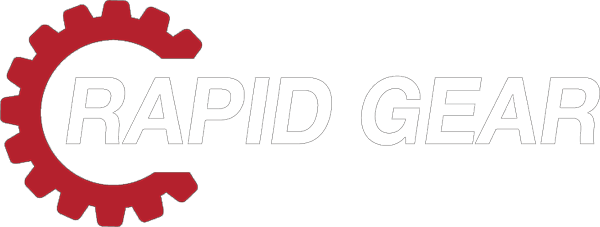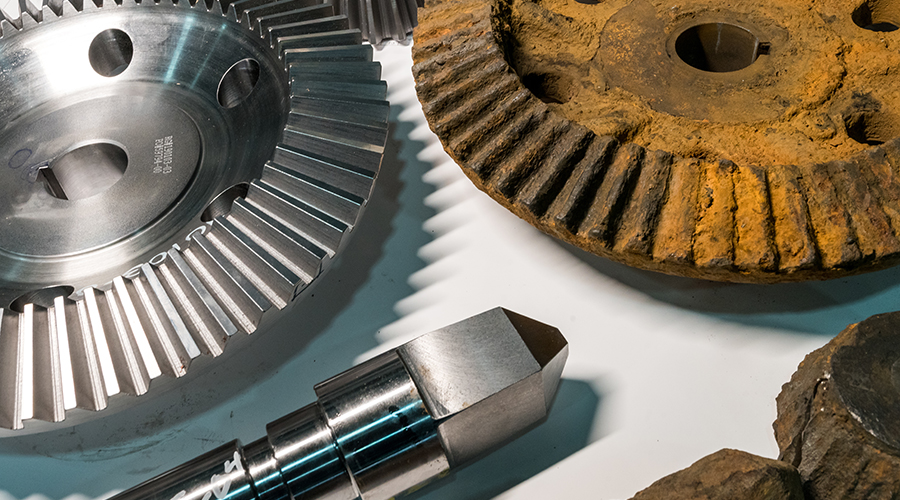In this article Renato Foti, VP, Business Development for Rapid Gear, will outline the challenges that mining plant engineers and maintenance managers face when gearing and gear reducer breakdowns cause downtime. Replacement parts and OEMs aren’t always readily available, which causes critical loss in productivity. Foti will explain the need for accurate data and the ways to work around massive parts that need to be reverse engineered, especially on site or in remote areas that may be isolated or even out of the country.
Knowing what you have in terms of machine details is not always easy at mining locations. Incomplete drawing packages, no manufacture drawing showing the required details to make parts within tolerance, and potential modifications made with out proper documentations all contribute to not having enough information problem. Add in obsolete machine parts with OEM’s changing ownerships or being long gone. These are the factures facing the heavy mining/ aggregate industry.
I will focus on power transmission gear reducers and gearing in this article, but the concepts will be the same for any mechanical parts that are worn or broken.
Catastrophic failure is common for gearing especially after bearing wear or if a system abruptly stops. This is immediate downtime and with out a spare reducer or parts, manufacture time can be affected for many weeks causing huge problems for your customers and internal costs. With preventative maintenance , you can hope to find these potential problems, but as history teaches us, no system is perfect, and failure will happen.
Slow wear of parts can usually be seen well in advance but getting new parts can also be very risky with not knowing the length of time before a major failure happens. As parts wear, the time to failure begins to be exponential so time becomes your enemy. This is when you realise your not as prepared and the data you have may or may not be enough to get new parts made. The question can be how to get the required data for your suppliers to quote you parts. For larger parts, they are usually not stock items and have to be custom made to order. Lead time are a factor. Many OEMs are international and on-site help can be difficult to obtain.
If the mine can not stop long enough to enable engineers or service personal to full inspect the area, getting proper data while machines continue to run become harder.
Reaching out to machine job shops is a way to get outside help to handle the reverse engineering and hopefully avoid an expensive down situation. Giving that shop the correct data can be very difficult, especially if you’re not able to supply sample parts. Reasons for not being able to supply sample parts are many, such as the following:
- You can not get the parts out of the assembly.
- The mill or mine is still running and you can’t stop production.
- The distance to get the parts to the specialized shop is very far and costly.
- Not know who can really help you.
- Purchasing needs multiple quotes and delivery times and you only one part to send out
- You have a spare, but it has been stored for many years (usually not maintained properly; I.e. Reducers need a decadent moisture inhibitor and also they need to be turned periodically) and its risky to put into service with out checking the unit.
- Part are too big to ship; you require on site help.
Old drawing can help, but Gearing requires both mating parts to mesh exactly. One example that is common is that the pinion will wear down much faster than the larger bull gear as it normally would even though the pinion is a harder material. Depending on the ratio of the system, one tooth on a bull gear can see many times less that each tooth of a pinion resulting in less wear. If the data on the gearing is not available, it becomes challenging to determine the following data:
- Helix pitch
- Center line distance
- Number of teeth ( should be easy but mistakes can happen) Mark each tooth!
- Diameters of the parts
- Basic type of gear ( the easy part)
- DP
- Full depth of tooth
- Grade of metal ( can be hard to tell)
- Hardness of metal on tooth and on shaft.
- Type of heat Treating. Induction, Carburize, flame, thru harden, Nitride ( also hard to determine with out lab testing )
- All keyway information
- AGMA quality
- Circular pitch and modular pitch
- A good and accurate sketch or drawing showing tolerances.
If you have accurate data on all these points, a fully integrated gear shop should be able to manufacture the gear. With missing data or data that you can not get easily, the job becomes riskier to manufacture. With experience and knowledge of the application, engineers can make recommended assumptions to present to the customer so that a suitable part could be made.
Making a matching set also eliminates some of these issues as long as you have accurate centre distances for the gear pairs. Information like, Helix angle will not mater to a great extent.
The facility with reducer and or gear problems should understand what they need in terms of parts, timing and be prepared to act quickly. For example, any reducer that is built offshore and is small, chances are its more disposable and better to buy new. This seem logical, but we still see issues like these coming across our desks. Once gear reducers are larger ( over 250 pounds) it can be economical to rebuild, and as the units get even larger, it really becomes more economical to rebuild. Size matters.
At times, special circumstance will determine the action plan, but the facility should understand that upfront. Basically, the better the data supplied with clear directions and expectations, the better the result will be in reverse engineering and delivery time. A good maintenance plan in every facility is critical and having the right shops contacted to service them will result in better timing and part quality.
Only a few select shops can handle mining and heavy industry needs for machining purposes. In large urban areas, you can find more shops, but from our experience they are far and few apart. Understanding your supplier capabilities is critical to avoid time delays if they in turn have to sub out the majority of large scale jobs.

